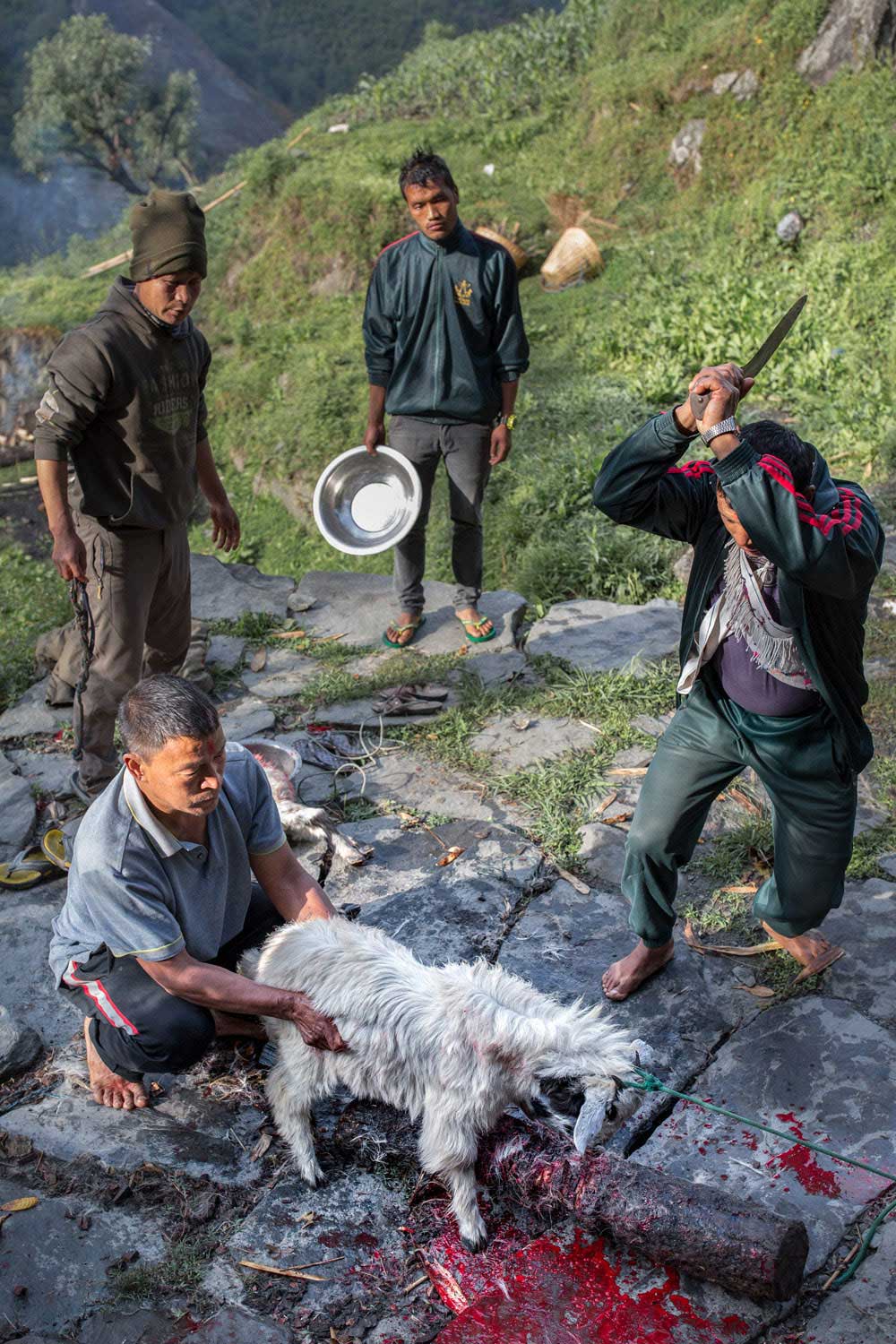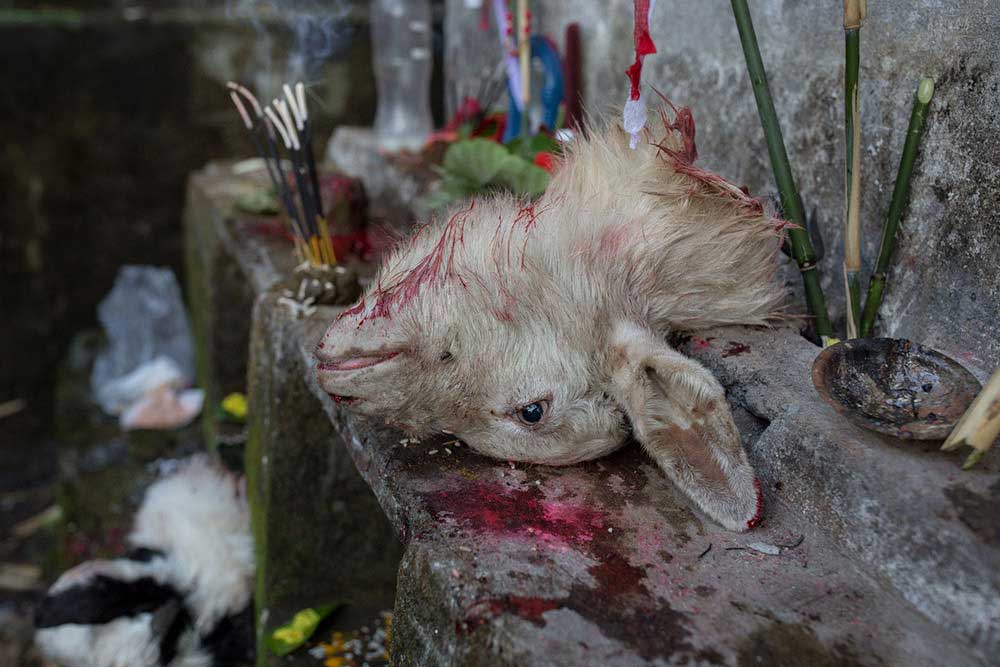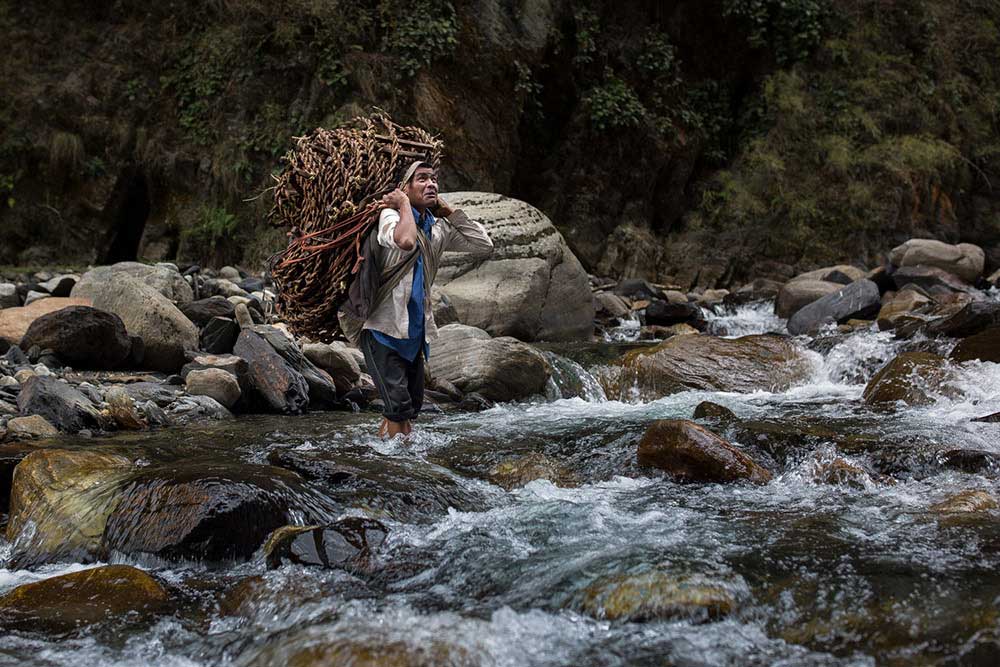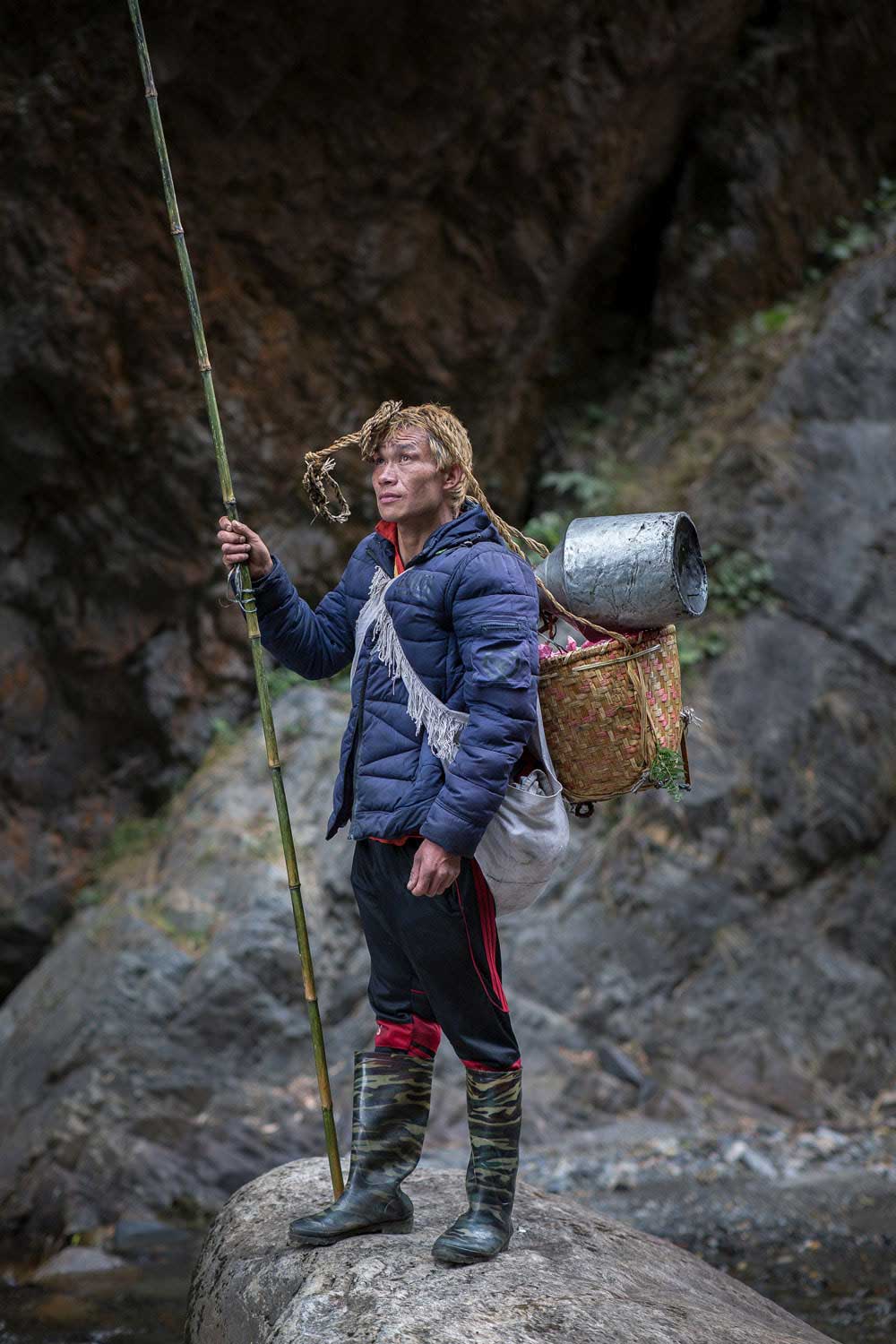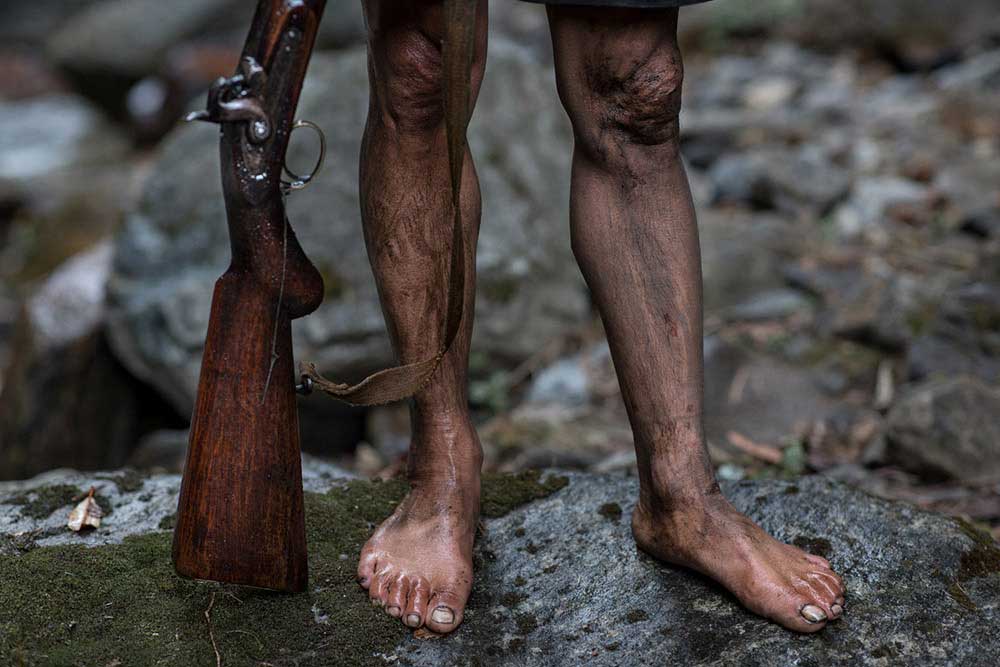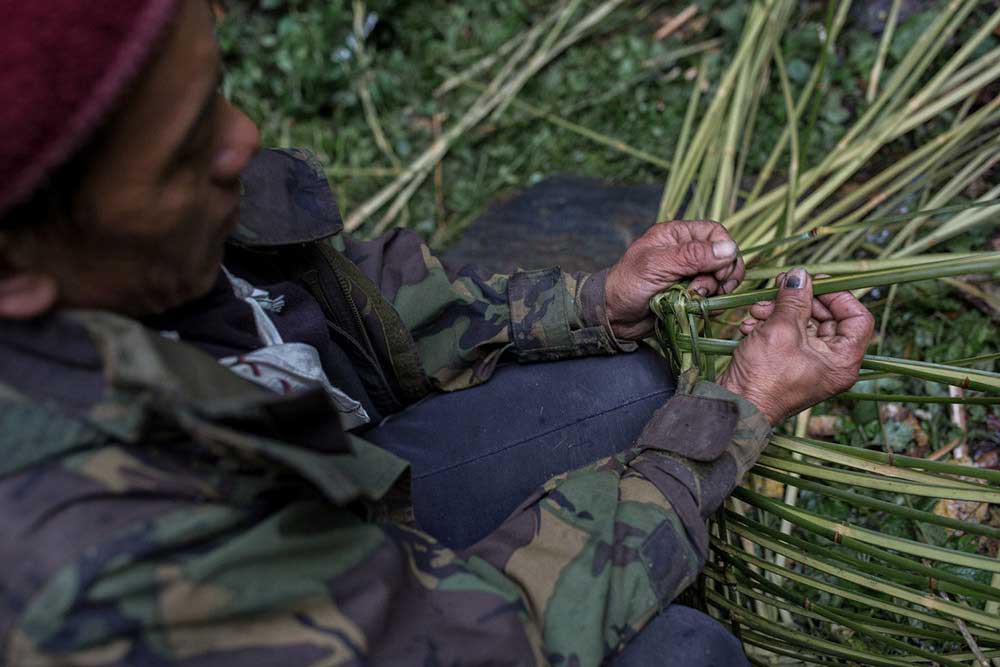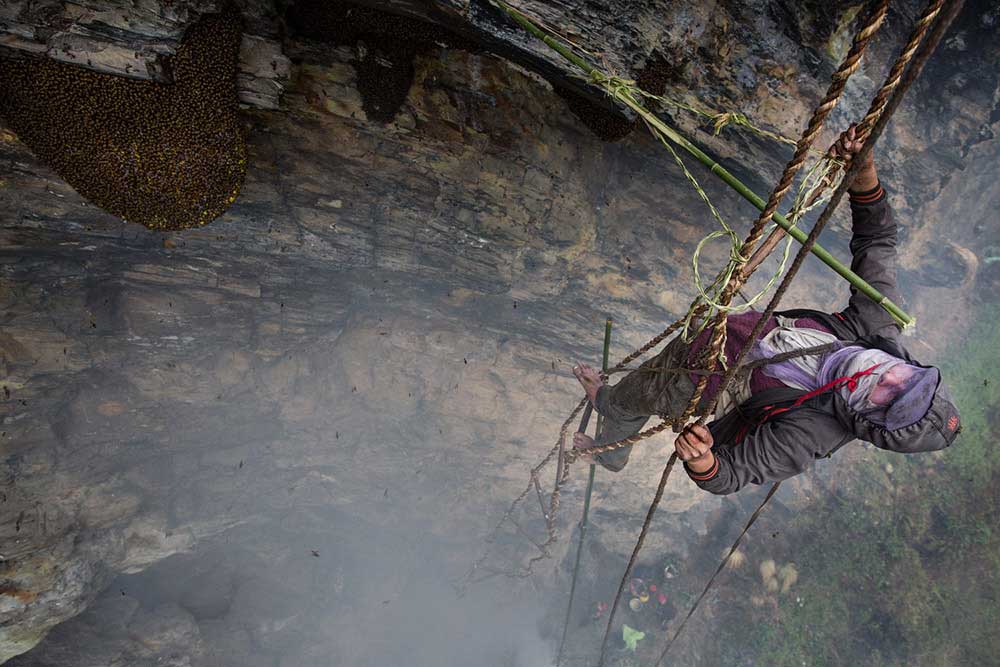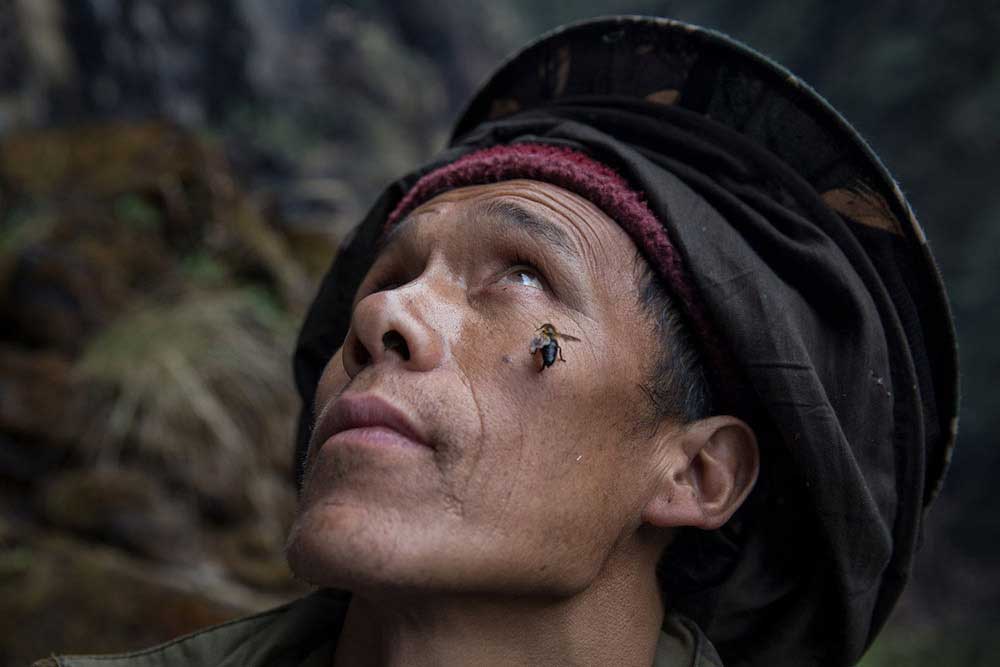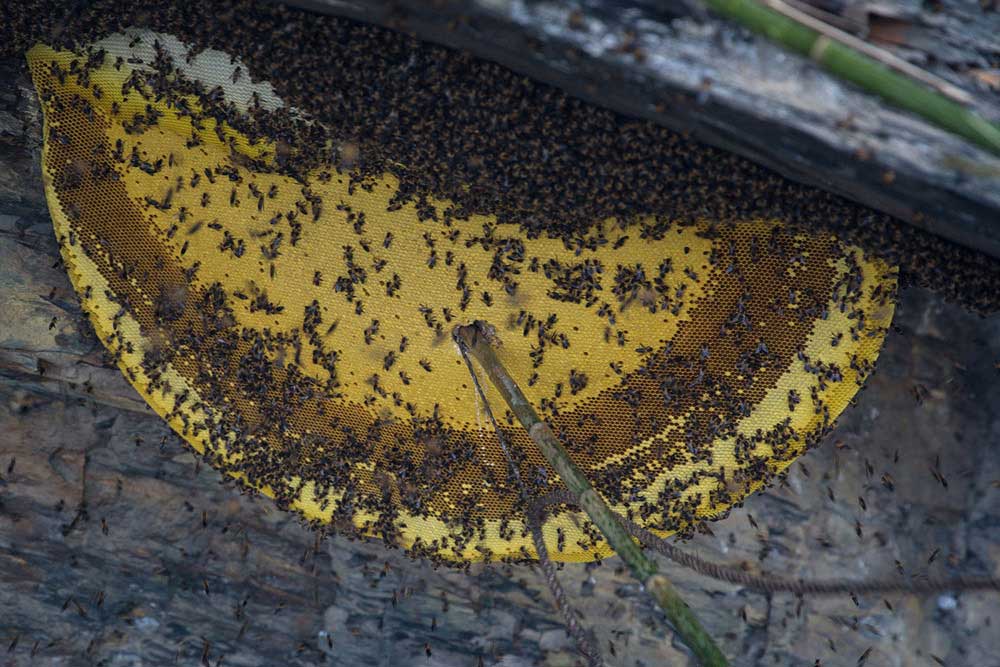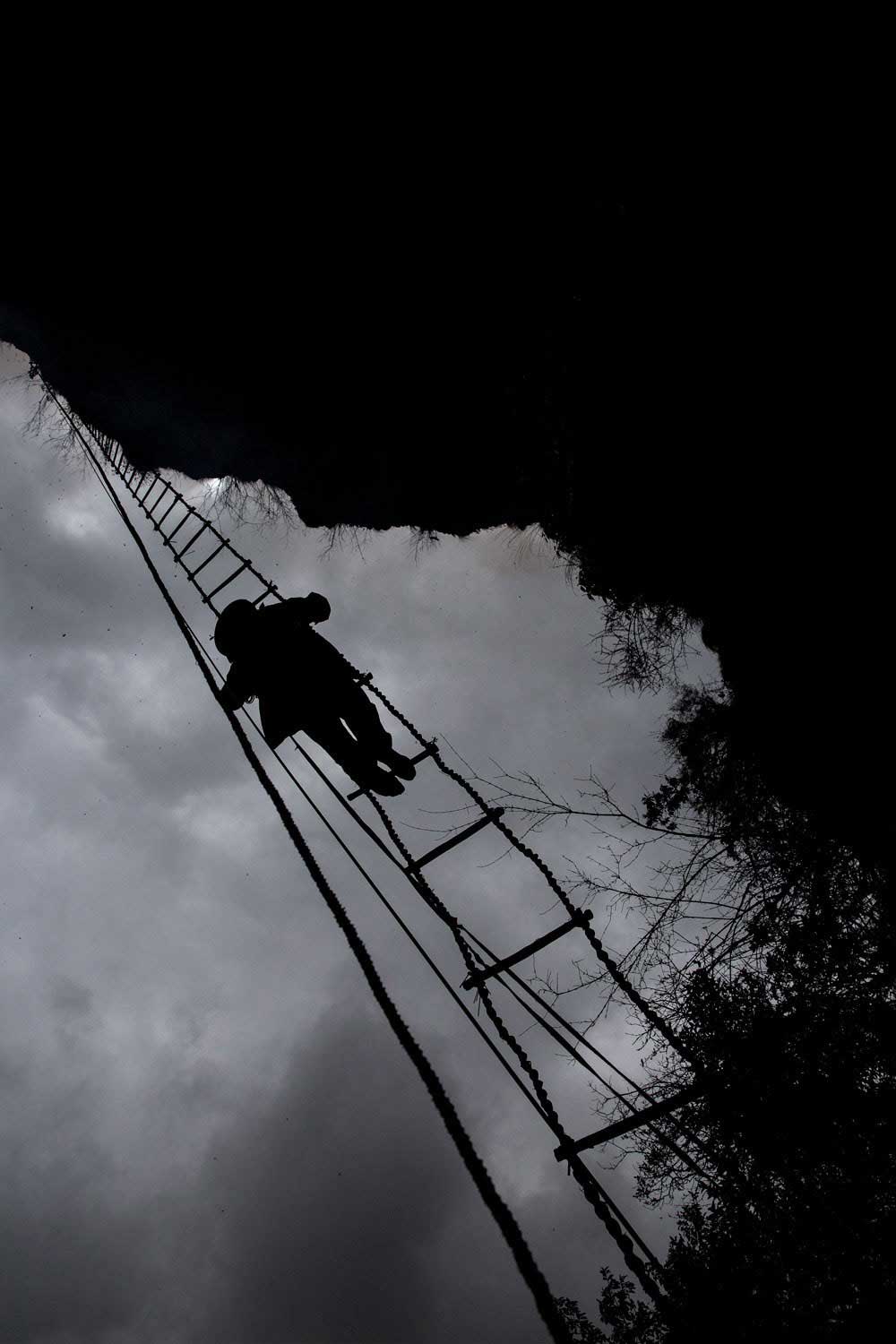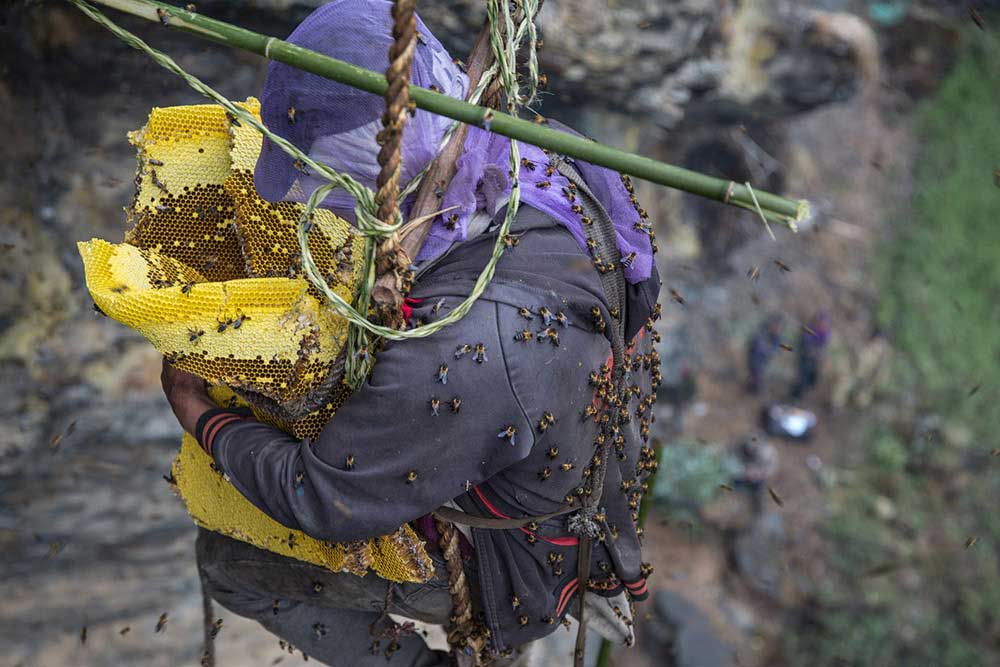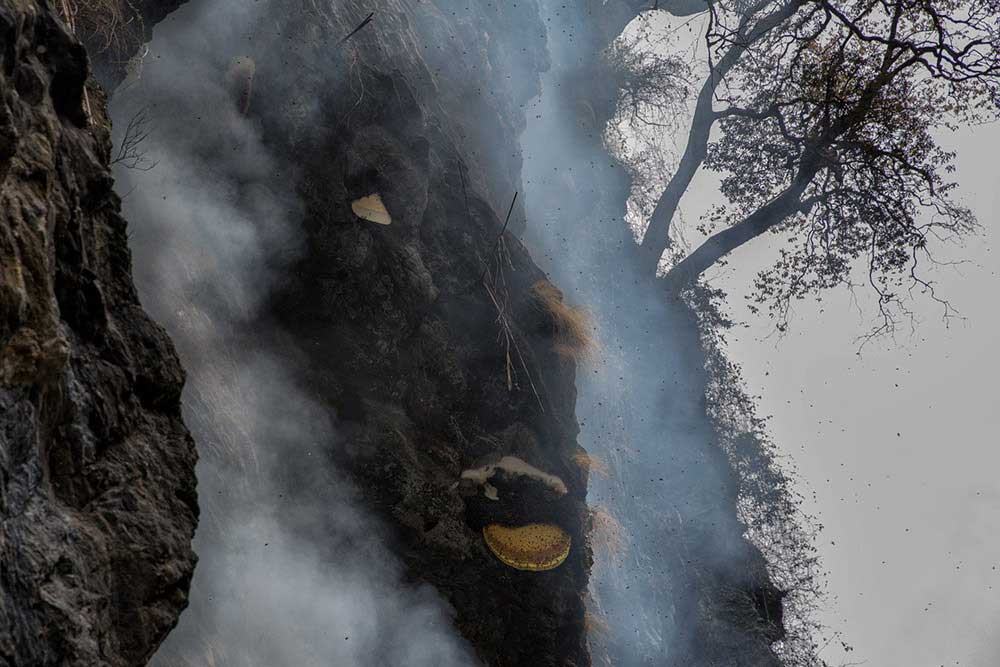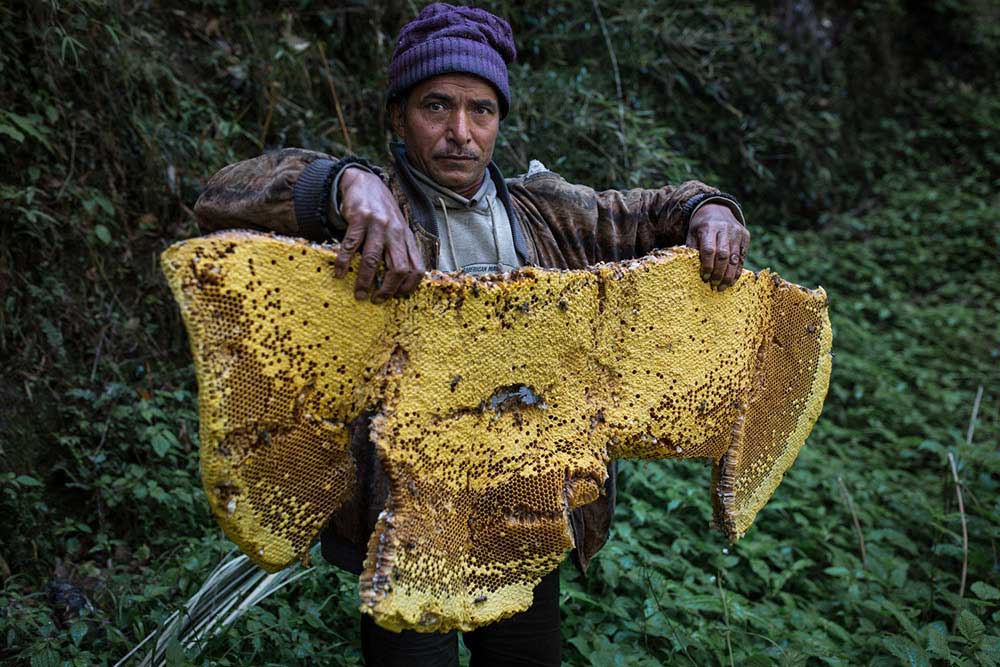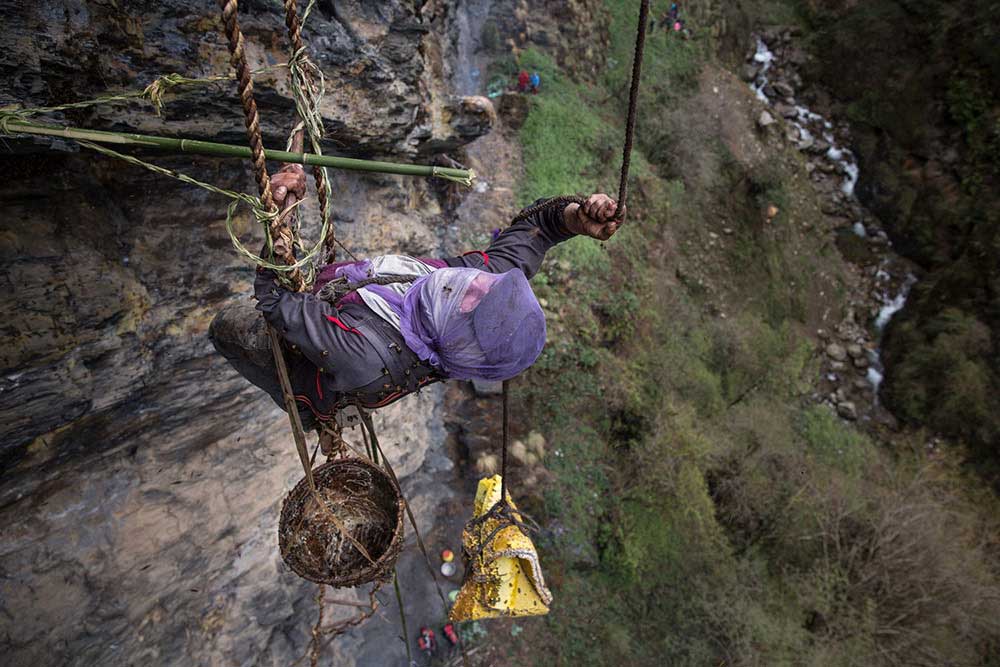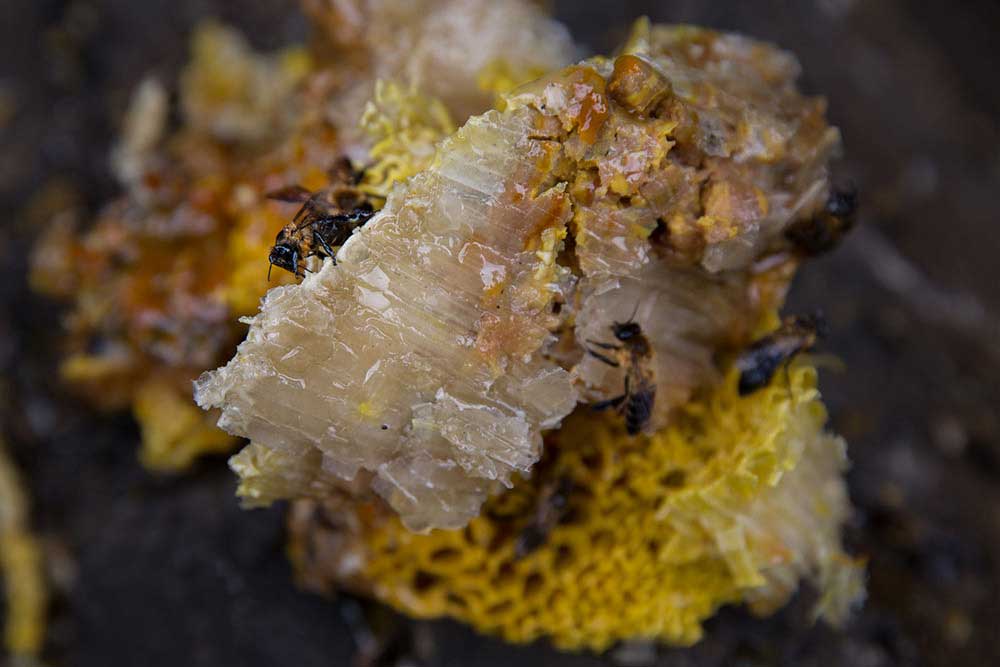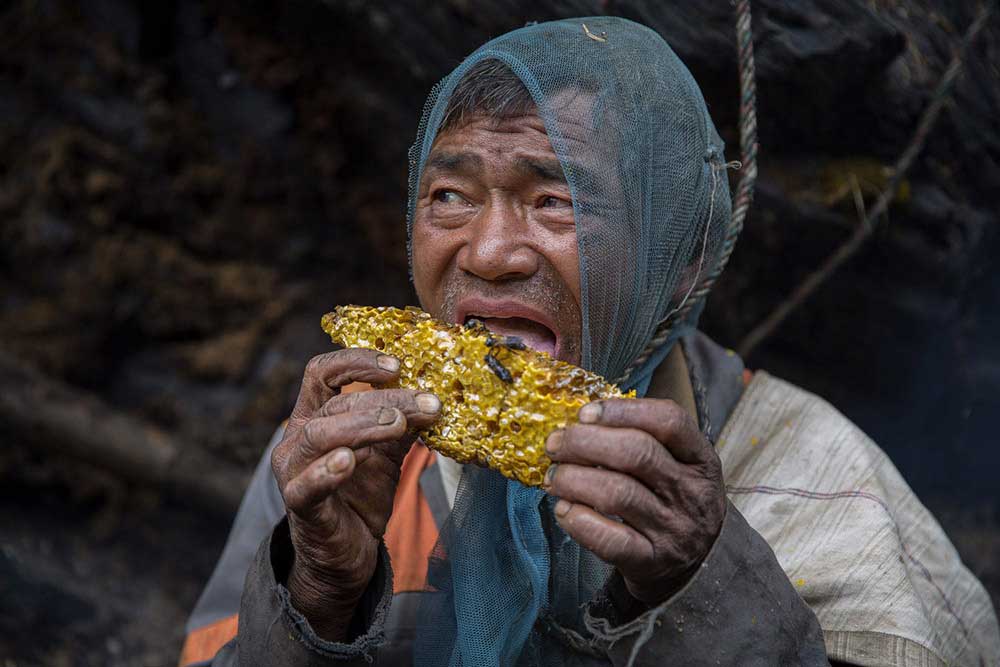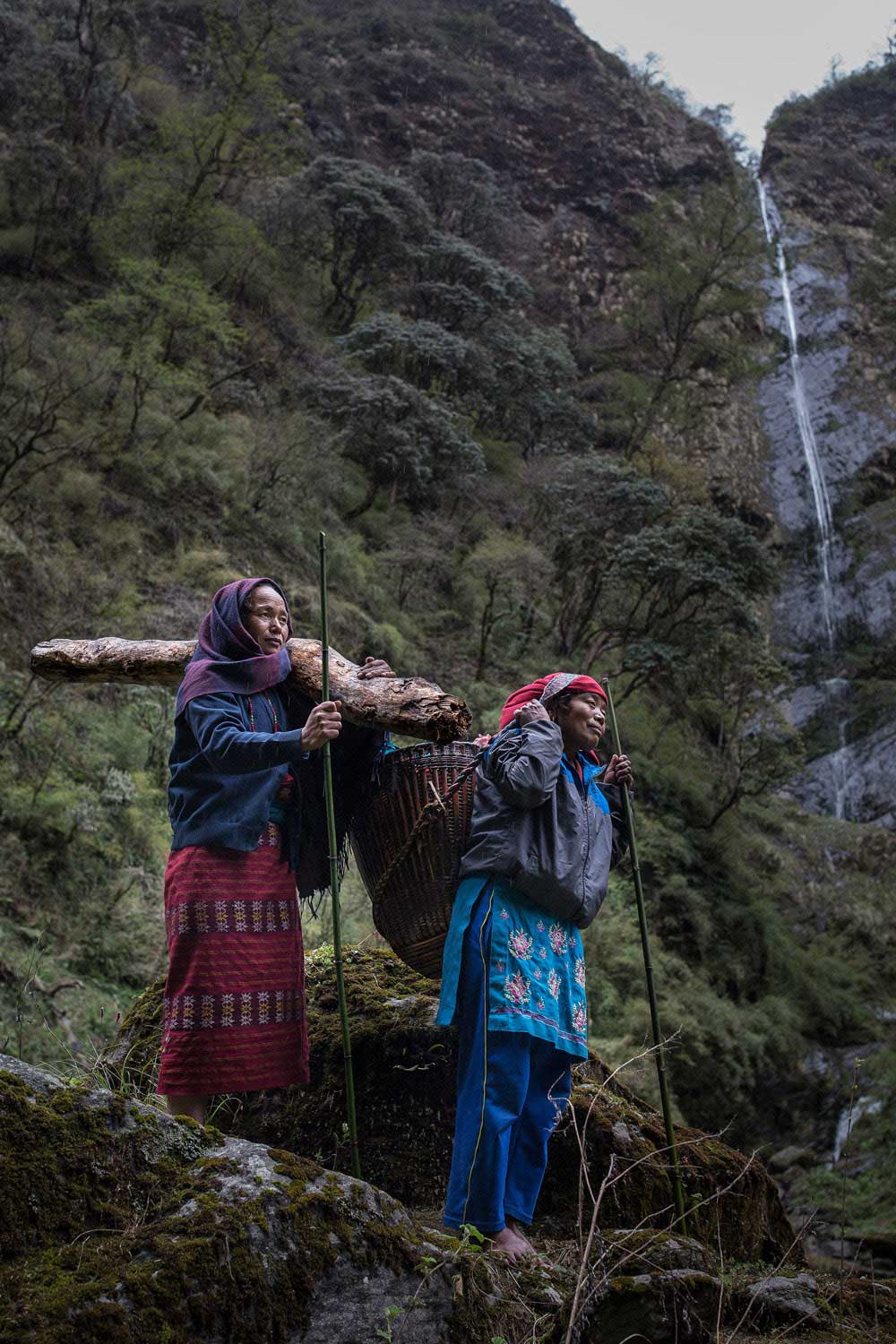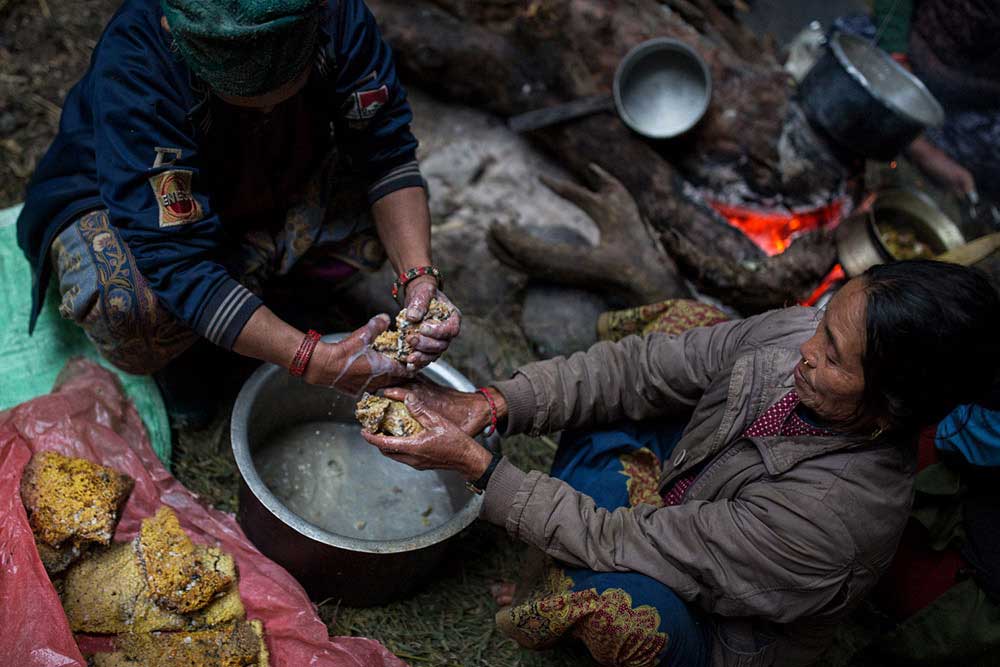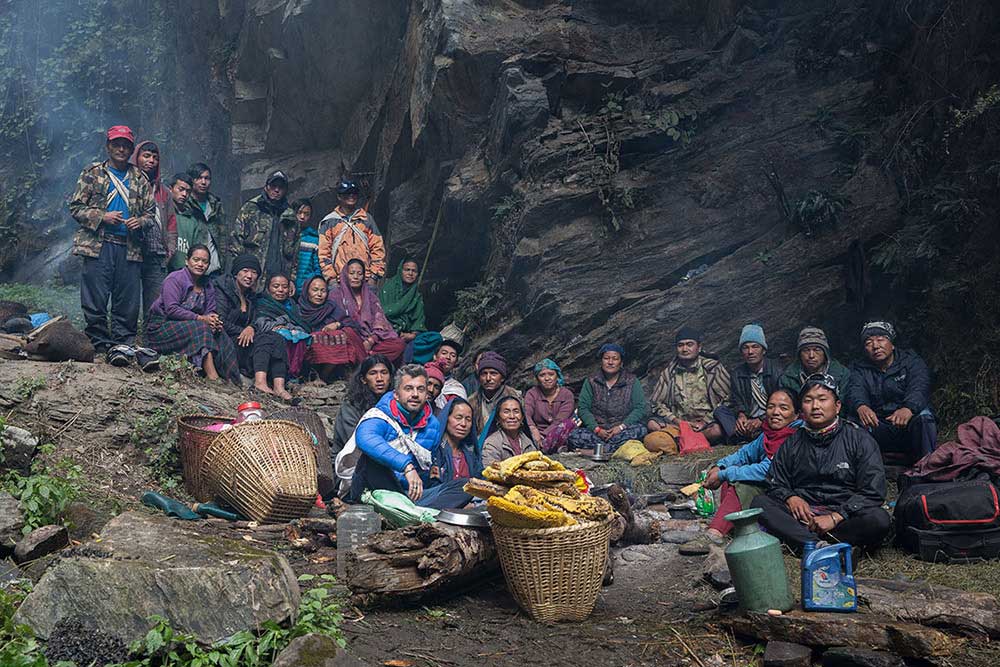In the vast mountain ranges of Nepal, there are isolated tribes who have, for centuries, collected a special type of honey from the slopes of the Himalayas.
They live in remote villages of wood and stone houses which are set into the mountain range of the Dhaulagiri district, under the shadow of Mount Everest. Far from anything, this unspoilt area is only accessible on foot, and a couple of days from the neighboring villages. Honey hunting is an atavistic tradition, handed down through the generations and a vivid testimony of a culture linked to nature and the seasons. Still practiced today with the help of rudimentary tools and without any safety precautions. It is a dangerous, crazy, and sometimes fatal ritual that may not last much longer. The reason for this can be partially put down to change in the ecosystem. However, the main threat is due to the growing reputation of the properties and effects of the honey. Over the years the demand for this quality product has increased exponentially, especially in the Chinese, Japanese, and Korean markets. Demand combined with the complexity of procuring it make this an expensive product. The Himalayan giant bees are the largest in the world and produce different types of honey depending on the season and the elevation of the nectar producing flowers. The honey has a reddish, viscous appearance, and is known as “mad honey”. It is created in huge hives that can reach two metres wide and sit upon jagged protrusions and steep rock faces. The only time the honey contains the graianotoxin, a toxin produced by from the nectar of Rhododendron blooms, is in the spring. Spring honey has hallucinogenic properties, and two tea spoons are enough to produce psychotropic effects similar to that of cannabis. There are those who describe the effect as “slightly intoxicating”, whilst others, see it as a deadly poison. For the Nepalese, “mad honey” is considered curative in small doses and they will use it as an antiseptic, a cough syrup, and a pain reliever. I am assured by the ex-leader of a group of honey hunters that “a teaspoon of honey every morning strengthens the immune system and allows you to lead a long and more productive life”. This is qualified by the statement “Exceeding the recommended dose may cause hallucinations and momentary loss of vision and, in larger quantities, also induce cardiac arrest”.
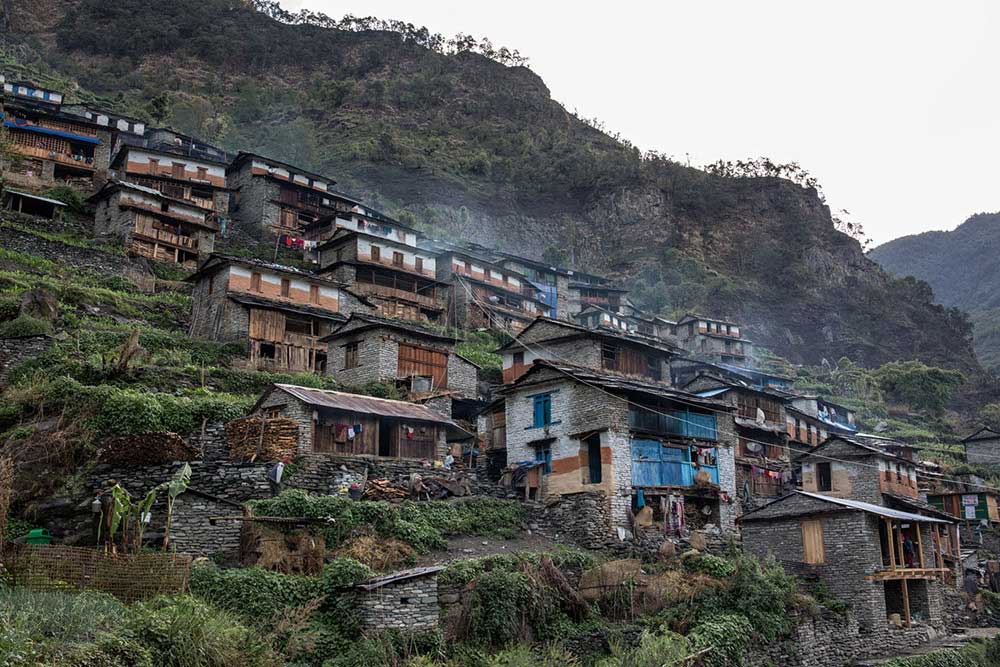
The preparation for this project was a time consuming, but hugely important commitment. The search to find the right contacts and confirming the accessibility to locations took one year to complete. It was especially difficult, because I decided to go solo, and over the course of the planning I repeatedly lost hope and saw the opportunity disappearing. But, in any case the Spring came and I was there, together with the tribes of Pun (Magar), hunting this nectar and sensing the ancient aura. It took me four days to reach their village. Knowing of my arrival, the tribe prepared me a welcoming ceremony. I was greeted with bows, hugs, music, flower necklaces, tilaka (the third eye decoration on the forehead, also called pundra), but, above all, by a world of genuine smiles. Amongst them there is Durga Gharti, the “Śikārī”, the young man who for years has been chosen as the leader of the group of honey hunters. We speak different languages, but we can communicate with looks, even if they are timid. My legs are struggling from tiredness, but I spend the evening with them all. It is an important moment. They were waiting for me to begin the assembly. In fact, every movement and decision cannot take place without all the village members having discussed and later questioning the deities (day of the lunar cycle). The word comes: This year the most favorable day for honey hunting will be the first Wednesday of the month and it will be prohibited to disturb the forest on Tuesdays and Thursdays. We toast with some “kodho ko rokshi” (millet wine) and the time to recover from my journey never comes. The hours of sleep available are limited. The alarm is at dawn break and the villagers must get up to thank the gods of the forest. There will be a ceremony and opulent offerings of flowers, fruit and most importantly, the spilling of blood to bless and pay homage to the land. The sacrifice of one or more animals is a necessary offering to guarantee an abundant hunt and harvest for the coming year. Blood is the symbol of life and rebirth, elements and plays an important role in the daily life of the people. We arrive to the top of the village, where we find a small Mandila temple. You can find your way by listening to the prayer bells. [Official Website]



